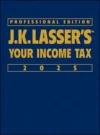Three New Tax Laws for 2009
As we ring in the New Year, there are three new tax changes to note for this year; two are favorable, but one is not. The sooner you know what they are, the sooner you can incorporate them into your tax plans throughout the year.
Required Minimum Distributions
The Worker, Retiree, and Employer Recovery Act of 2008, which was signed into law on December 23, 2008, suspended the required minimum distribution (RMD) rules for IRAs and qualified retirement plans for 2009. Those who want to take distributions can take as much, or as little, as they want from these retirement accounts.
RMDs for 2008 that are permitted to be made in 2009 by reason of the individual’s required beginning date being April 1, 2009, must still be made; they are not suspended.
For an individual whose required beginning date is April 1, 2010, the RMD for 2010 must be made by the last day of 2010.
For RMDs under the five-year rule, the five-year period is determined without regard to calendar year 2009 (e.g., the end of the five-year period with respect to an account for a person who died in 2007 is 2013 instead of 2012).
Home Energy Improvements
If you make certain energy-related improvements to your principal residence this year, you’ll not only save on energy costs but can qualify for a federal tax credit. This credit, added back by the Emergency Economic Stabilization Act of 2008, applies only for 2009; it will not be available after 2009 unless Congress again extends the law.
The credit, which is up to $500, applies for adding insulation, storm windows (capped at $200), energy-efficient boilers, and other certain improvements to a main home. The basis of the residence is reduced by the amount of any credit claimed.
There may also be state tax breaks for these energy-related improvements, so check with your state tax department.
Limit on Home Sale Exclusion
Not all tax changes are favorable. Due to a change made by the Housing and Economic Recovery Act of 2008, which applies starting in 2009, homeowners may want to think twice before renting out their residence or converting it to rental property. Any such use after 2008 is “nonqualified use,” and the exclusion for gain on the sale of principal residence (up to $250,000 for singles or $500,000 on a joint return) cannot apply to the portion of gain related to nonqualified use.
The portion of gain eligible for the exclusion is figured by multiplying the gain by a fraction, the numerator of which is the period of time that the home is used as a principal residence (excluding any time prior to January 1, 2009), and the denominator of which is the entire period of ownership (including any time prior to January 1, 2009).
Leaving a home vacant (e.g., during an extended vacation or after moving from the home to a new residence) does not count as nonqualified use; the full exclusion can be claimed provided the homeowner meets the usual ownership and use tests.
Capital gain distribution
A mutual-fund distribution allocated to gains realized on the sale of fund portfolio assets. You report the distribution as long-term capital gain even if you held the fund shares short term.



